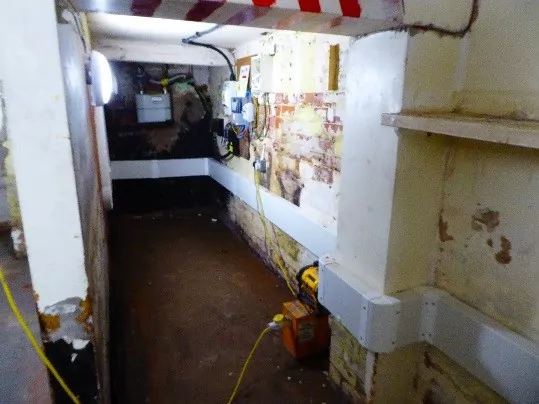
Moisture is a primary cause of a large percentage of problems in buildings. Blistering, corrosion, decay, delamination, efflorescence and freeze/thaw damage are just a few of the common defects associated with moisture in a building. Unfortunately, rectifying the damage caused by moist conditions within building elements can be extremely problematic, troublesome and expensive to repair.
In order to support the results obtained from measuring the moisture content in building elements, it is essential to recognise the likely sources of damp. Determining the source is an essential part of investigations into moisture-related defects that form party of our commercial building surveys and dilapidation surveys.
Although there are many tools and methods utilised to help determine the source of damp, this post will concentrate on the Chemical Analysis to provide important clues as to the source and also highlight anomalies in moisture measurements to provide a crucial aid to correct diagnosis.
A chemical analysis can be carried out on salt deposits, plaster or wallpaper scrapings to determine the presence of two types of salts, nitrates and chlorides.
A useful guide for the interpretation of salt test results is as follows:
Nitrates + Chlorides + (may be moisture from the ground, tap water, other plumbing leaks or garden soil)
Nitrates + Chlorides – (a rare result from the ground is likely tap water)
Nitrates- Chlorides + (Tap water possible)
Nitrates – Chloride – Penetrating damp (rainwater) probably not tap water.
An example scenario is presented below, a damp basement with high levels of moisture entering through the brick wall. Moisture levels appear to increase with wet weather. Located above the area in question, a recently repaired rainwater gully. The increased moisture content when it rains, along with the test results below, provide further evidence that there are problems with the surface water drainage pipes and are not likely to be problems mains water supply pipes. It was concluded that further investigations such as a CCTV survey of the drainage were required to identify any breaks in the drains, these provided evidence of damaged sections in close proximity the buildings frontage.
Test 1 – Location
Test 1 – (Salt sample – likely to be rainwater) –Salt Sample Brown No Chlorides Present, Yellow: No Nitrates Present.
Test 2 – (Tap Water Sample to illustrate chlorides present in incoming mains) Yellow: No Nitrates Present, Yellow: Chlorides Present.

At Bradley-Mason LLP, our team of highly experienced and versatile building and commercial dilapidation surveyors bring a wealth of building consultancy skills to the table. Our specialist expertise includes building surveys and material investigations, property acquisitions and project management to take care of all your property needs. To find out more about our services, to discuss your specific requirements or request a quote, please get in touch.
DISCLAIMER: This article is for general information only and not intended as advice. Each project has its own set of unique circumstances, all potential issues should be investigated by a surveyor on a case by case basis before making any decision.







